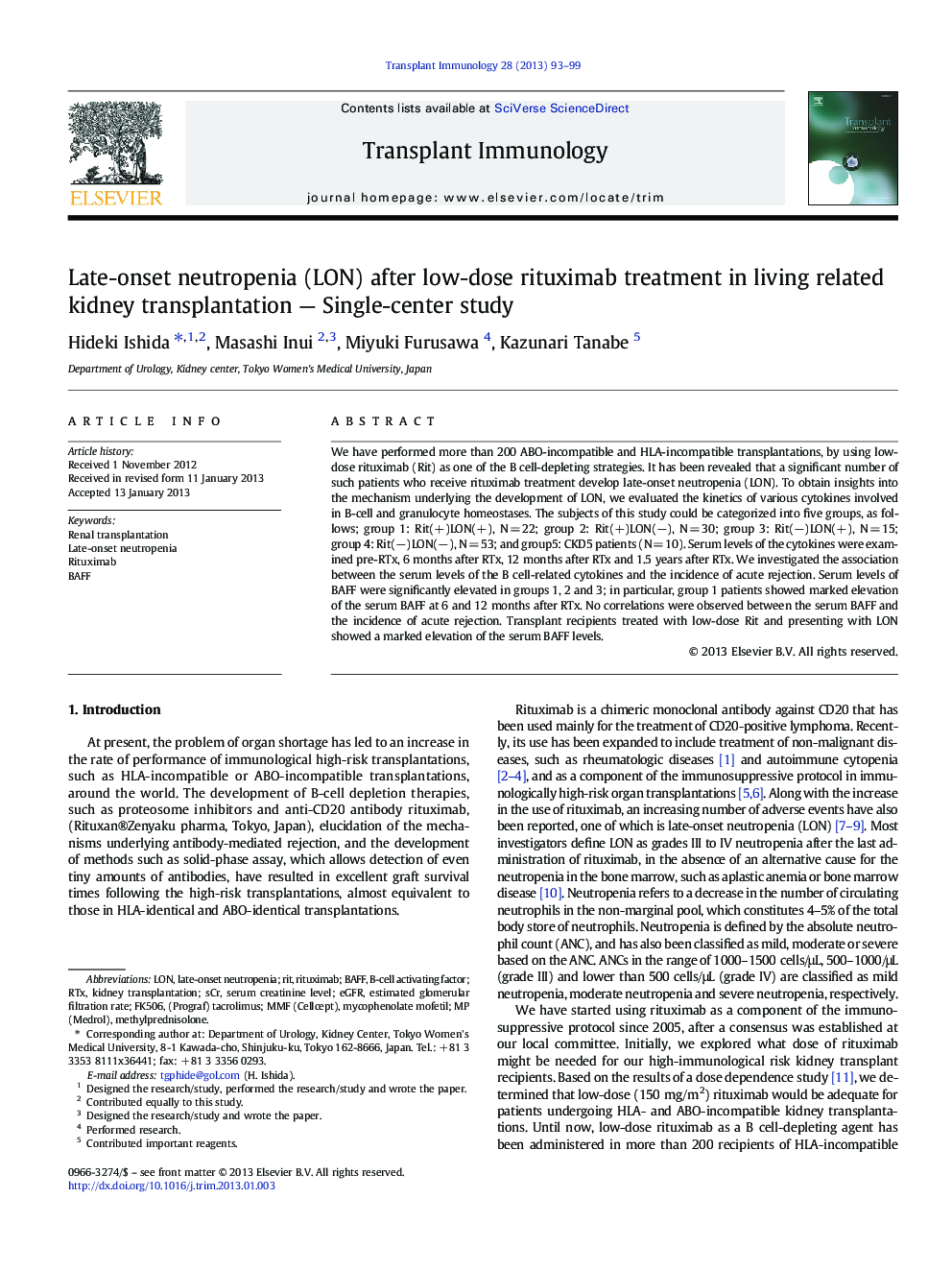| Article ID | Journal | Published Year | Pages | File Type |
|---|---|---|---|---|
| 3392156 | Transplant Immunology | 2013 | 7 Pages |
We have performed more than 200 ABO-incompatible and HLA-incompatible transplantations, by using low-dose rituximab (Rit) as one of the B cell-depleting strategies. It has been revealed that a significant number of such patients who receive rituximab treatment develop late-onset neutropenia (LON). To obtain insights into the mechanism underlying the development of LON, we evaluated the kinetics of various cytokines involved in B-cell and granulocyte homeostases. The subjects of this study could be categorized into five groups, as follows; group 1: Rit(+)LON(+), N = 22; group 2: Rit(+)LON(−), N = 30; group 3: Rit(−)LON(+), N = 15; group 4: Rit(−)LON(−), N = 53; and group5: CKD5 patients (N = 10). Serum levels of the cytokines were examined pre-RTx, 6 months after RTx, 12 months after RTx and 1.5 years after RTx. We investigated the association between the serum levels of the B cell-related cytokines and the incidence of acute rejection. Serum levels of BAFF were significantly elevated in groups 1, 2 and 3; in particular, group 1 patients showed marked elevation of the serum BAFF at 6 and 12 months after RTx. No correlations were observed between the serum BAFF and the incidence of acute rejection. Transplant recipients treated with low-dose Rit and presenting with LON showed a marked elevation of the serum BAFF levels.
► LON occurs at the same frequencies after low-dose rituximab administration. ► Transplant recipients presenting with LON showed elevation of BAFF levels. ►No correlations were observed between the serum BAFF and acute rejection.
